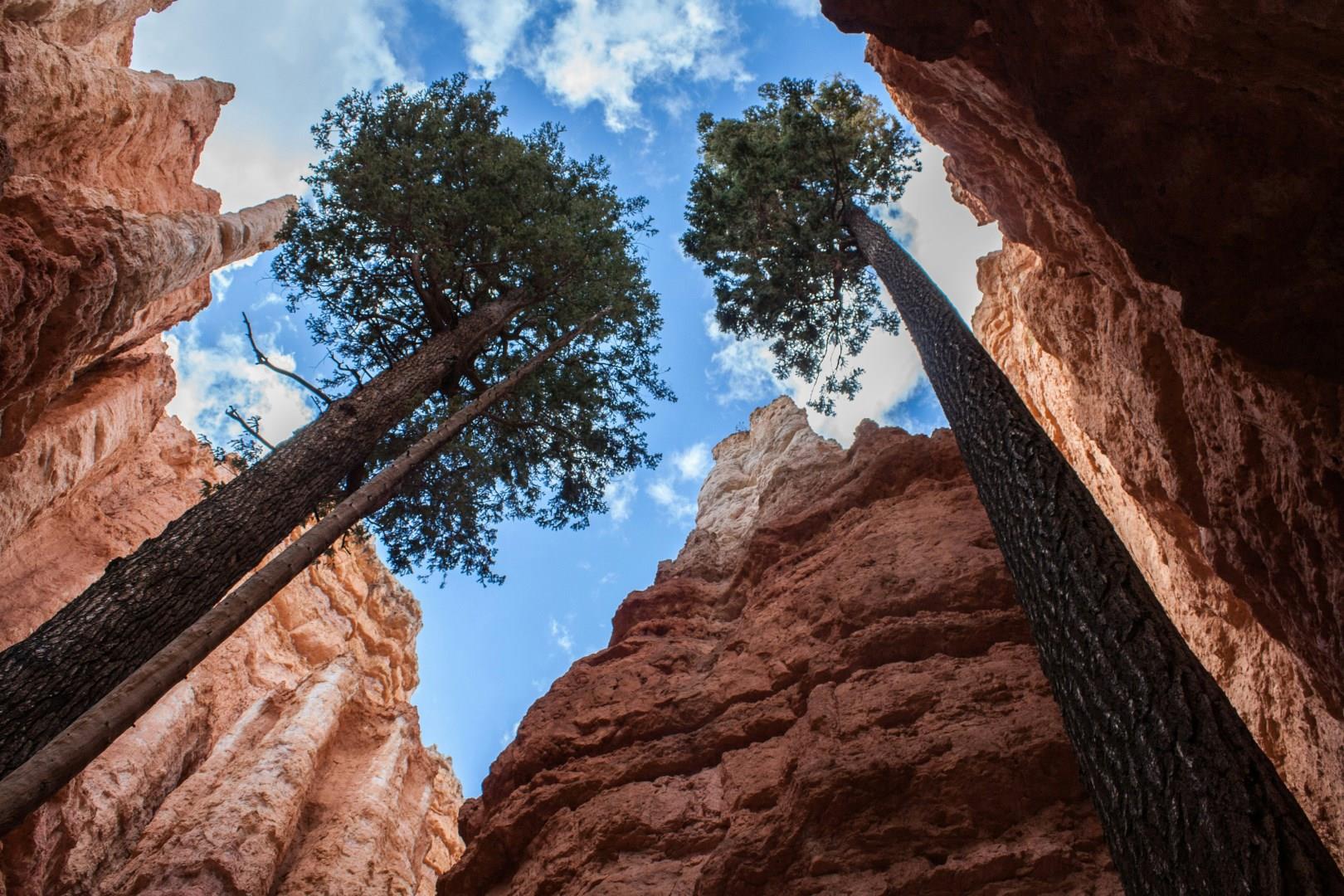


Bryce Canyon, tucked into the high plateaus of southern Utah, offers one of the most unusual landscapes in the American Southwest. It’s not actually a canyon but a series of natural amphitheaters carved into the edge of the Paunsaugunt Plateau. What makes Bryce unique is its dense collection of hoodoos which are tall, thin spires of rock formed over millions of years by frost-wedging and erosion. Nowhere else in the world is there a greater concentration of these colorful formations, and visitors can view them from above or descend into the maze-like trails that weave through their bases.
Sunrise Point and Sunset Point are two of the most popular overlooks, named for the way the changing light plays across the rocks. For a more immersive experience, the Navajo Loop Trail leads hikers through narrow switchbacks into the heart of the amphitheater, past formations like Thor’s Hammer and Wall Street. At night, Bryce Canyon becomes one of the darkest places in the United States. The park’s elevation at over 8,000 feet combined with low light pollution makes it ideal for stargazing. The park even hosts astronomy programs and an annual Astronomy Festival, where visitors can observe planets, constellations, and the Milky Way with guidance from experts.
Although Bryce is a remote destination, the surrounding area adds to the experience. The nearby town of Tropic, founded by Mormon settlers in the 1890s, still reflects the agricultural roots of the region. Small inns, family-run cafes, and local outfitters serve those exploring the area. Just outside the park, Bryce Canyon City offers accommodations, general stores, and dining options like Cowboy’s Buffet & Steak Room, where diners can fuel up after a long day on the trails.